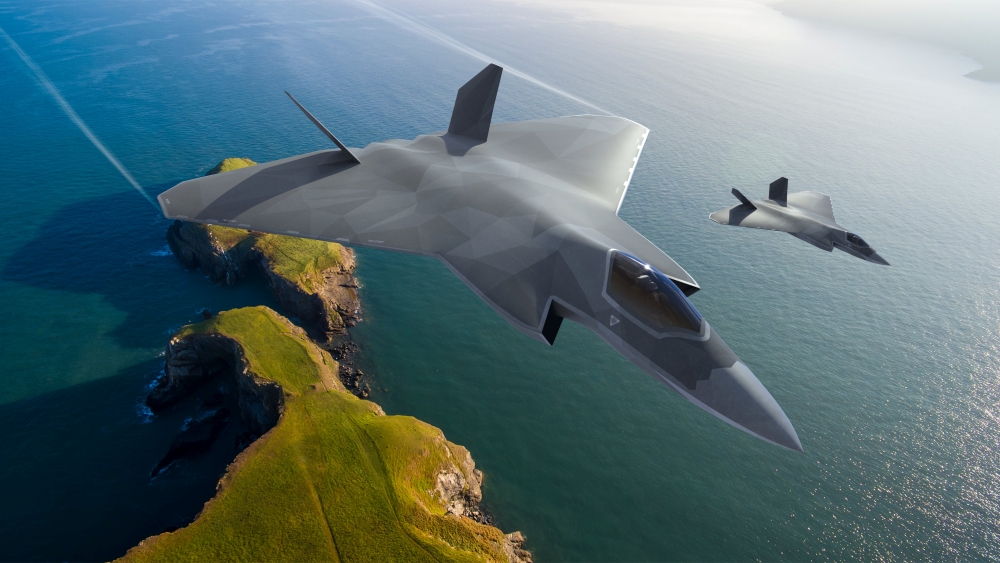
In the latest episode of the “Future Horizons: the TEMPEST podcast”, in cooperation with “Inside Air”, the Royal Air Force’s own official podcast, some of the key figures of the Future Combat Air System / Global Combat Air Programme have discussed some of the key attributes that the new jet will have.
Group Captain Bill, Royal Air Force, leads the Requirement and Concepting team for the UK MOD in the context of FCAS (Future Combat Air System). Also present were Dave Morris, from Leonardo UK, where he serves as the Head of Campaigns for Future Combat Air, GCAP; and Mark Tivey, from Rolls Royce, Business Development Director, Future Programmes, Combat Air.
The podcast opened with some clarifications which, although not new, help understand where GCAP sits within UK military planning: the Future Combat Air System is the overarching system-of-systems which will replace the capability currently assured by the Eurofighter TYPHOON. FCAS will see a number of systems and platforms and weapons involved, delivering a capability “greater than the sum of its parts”. Within FCAS, what has become the current GCAP project will deliver the “core platform”, a new, 6th generation, crewed fighter jet which will cooperate with Autonomous Collaborative Platforms, F-35s and other systems to bring the fight deep within enemy defence “bubbles”.
And as we know, Team TEMPEST is a UK alliance of the MOD and leading industry, formed all the way back in 2018, to develop and mature key technologies and systems for the new fighter. Team TEMPEST has of course flown right into GCAP, but formally it is still not indicative of the name that the new fighter might have. While TEMPEST could well end up being selected, it could also not be.
The podcast also went into some detail about how integration and cooperation of the new jet with the F-35 is very much at the heart of the GCAP initiative: UK, Japan and Italy are all F-35 users and, crucially, will all depend on the F-35B for their naval aviation needs in particular, and this has been part of the discussion from day 1.
Following in the footsteps of the F-35 itself, it was also reaffirmed that GCAP will have a “quarterback” role in controlling a whole “group” of platforms and systems, comprising of several drones, some or all of them expendable, and networked weapons. While this is not new, the protagonists noted that GCAP will have to “carry the server” forward, deep into the enemy defence “bubbles”. Networking all the way back to “home” cannot be assured – due to jamming, distance and/or the need to reduce transmissions for achieving stealth – but what has to be assured is the networking of forward-deployed drones and capabilities with the GCAP as the overall controller.
This in turn leads to the GCAP pilot being more of a “Weapon System Operator (WSO, or “wizzo” in nickname terms) than an old-school pilot. The GCAP team is clear on this being the case but interestingly is also clear on the fact that a single crew member should be able, thanks to technology advancement, to maintain control without need for a second seat.
Manoeuvrability is no longer the key requirement although GCAP will retain performance to give the pilot options. At the center of the requirements are the “3 S”: Stealth/Signature, to ensure overall Survivability; Suppression (of enemy defences), to be delivered through electronic warfare and weapons and Saturation, to be achieved with drone “companions”, often fully expendable.
This, in turn, drives the requirement in terms of sensors, very powerful and capable: it cannot be assumed that GCAP will be able to draw from external sources such as E-7 radar aircraft, it was noted, which means it must have “360°” information dominance of its own to complete its complex missions.
Payload and range, finally, are both key requirements and here we had, for the first time, some rough metrics offered: payload was described as “twice that of an F-35A”, with range described as “maybe” enough to cross the Atlantic on one internal fuel load, whereas TYPHOON needs 3-4 “plugs” to an air tanker to make it.
We already knew GCAP was a large aircraft intended to have long “legs” but these are very interesting metrics. From the work ongoing in the UK to build a first demonstrator jet, we already knew that the stealth air ducts are circa 10 meters long, to which the length of the EJ200s (the TYPHOON engines will initially be used) must be added. This means that the demonstrator will be, from air intakes to engine nozzles, already as big or indeed longer than an entire TYPHOON. Assuming this translates directly to the models, the estimated length of GCAP could be as great as 21 meters versus circa 16 for a TYPHOON.








.png)
